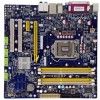Foxconn Q57M English Manual. - Page 36
► Trusted Computing, ► Initate Graphic Adapter, ► Pre Allocated Memory, ► Video Configuration, ► TPM
 |
View all Foxconn Q57M manuals
Add to My Manuals
Save this manual to your list of manuals |
Page 36 highlights
3 15th MB) will be reserved and is therefore not available for the OS' use. Since ISA cards are a thing of the past, you should always disable this feature. ► Trusted Computing Press to go to relative submenu. ► Initate Graphic Adapter This item is used to select which graphics controller is used as the primary boot device. ► Pre Allocated Memory This item is used to select the amount of system memory used by the Internal graphics device. Setting options: [Disabled], [Enabled, 32MB], [Enabled, 64MB] and [Enabled, 128MB]. ► Video Configuration Press to go to relative submenu. Trusted Computing CMOS Setup Utility - Copyright (C) 1985-2009, American Megatrends, Inc. Trusted Computing Trusted Computing Help Item TPM Support [Di sabled ] Enable/Disable TPM support in BIOS Move Enter:Select +/-/:Value F10:Save ESC:Exit F1:General Help F7:Previous Values F8:Fail-Safe Defaults F9:Optimized Defaults ► TPM Support TPM (Trusted Platform Module) is a specification promoted by TCG. A Trusted Platform Module offers facilities for secure generation of cryptographic keys. The TPM Work Group is chartered to create the Trusted Platform Module (TPM) specification. The definition of the TPM architecture comes from the TC and the TPM Work Group defines the implementation of that architecture. Work group members should have a working knowledge of security in relation to the design and usage of cryptographic modules. Members should also have a working knowledge of cryptographic techniques including public-key cryptography, cryptographic algorithms and protocols. This item is used to enable/disable the function of TPM support. 29















